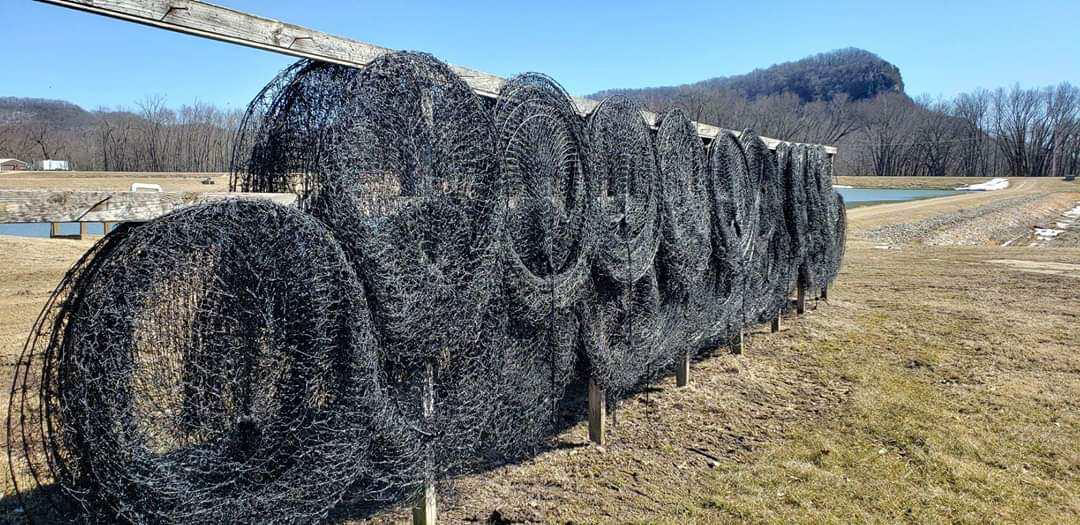
Walleye nets are hung on a fence in spring. Photo by USFWS.
The weather has not able to make up it’s mind this year at Genoa, we have warmed up several times and then received snowstorms right after! In between the snow and rain, hatchery staff have been busy getting the station ready for the spring field season. The buildings have been sprayed down, cleaned up, tanks are getting set up, spawning ponds were set up with air stones and screens and nets are getting prepped for the river. As soon as tanks were set up in the Sturgeon Building, we began draining our host fish pond after it finally warmed up enough to melt most of the ice on the pond, allowing us to harvest the fish. Every fall, Genoa National Fish Hatchery will harvest the production ponds, collecting enough fish first for the mussel program and then any fish beyond that will be used for fish requests or to help out our state partners. The host fish then will either be used immediately for mussels that brood in the fall or will hang out over the winter to be used in the spring or summer the following year. Because of space constraints at the hatchery, the fish will over winter either in the mussel building, sturgeon building or in one of the hatchery ponds. The most of the fish kept in the mussel building will be the ones inoculated in the fall with either Winged Mapleleaf or Washboard Mussels. Access to the colder pond water helps to keep the channel catfish closer to their normal temperatures, reducing stress on the fish and the growing mussels over the winter. The sturgeon building only has access to well water over the winter, so the golden shiners and largemouth bass will spend their time in in there. They are much better suited to the more constant water temperatures. The remaining channel catfish not used, smallmouth bass and walleyes will spend the winter in the pond. These species survive much better following the normal cooling down and warming up of the water outside, and the extra space reduces stress on the fish as well. By Angela Baran-Dagendesh
